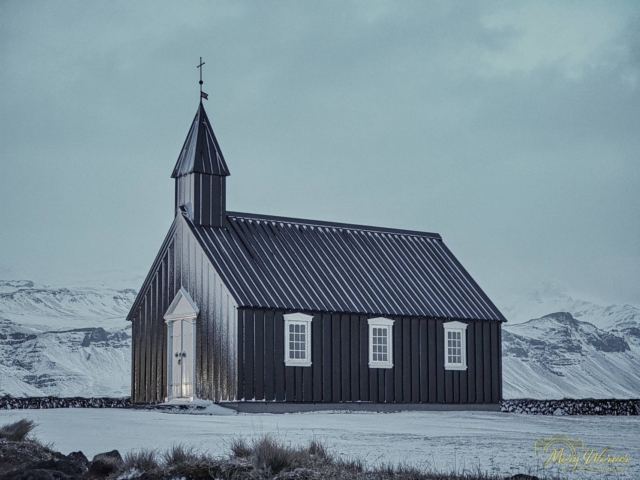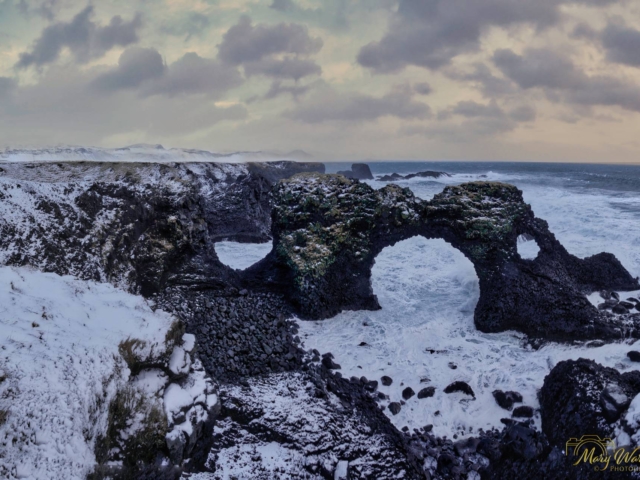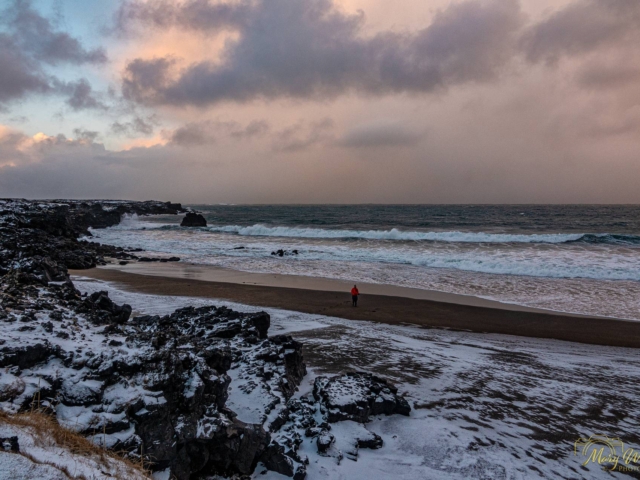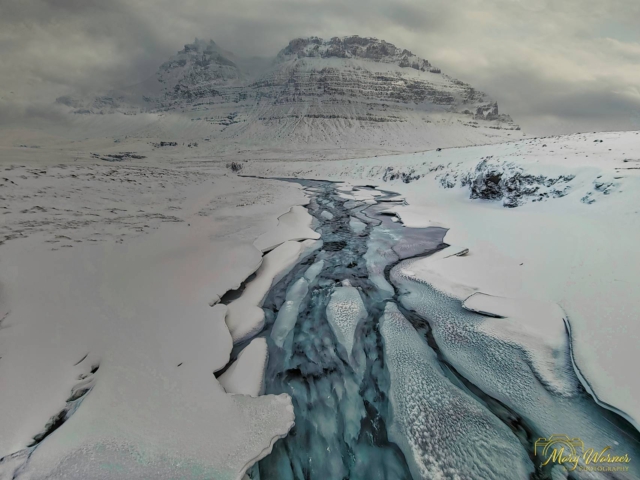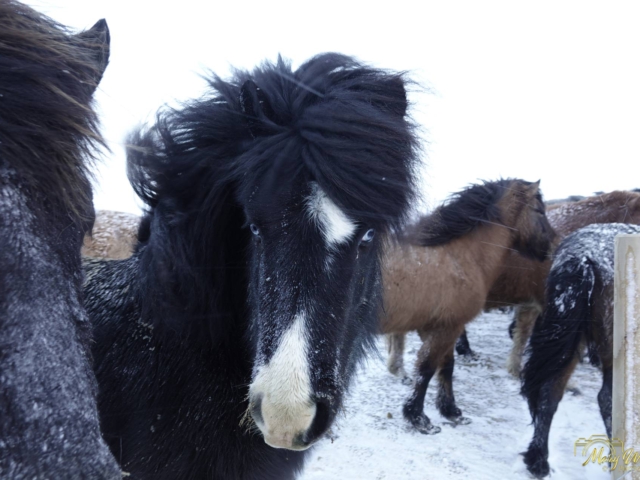
In West Iceland, we saw more Icelandic horses in the snow, drove along the Nordura river and stopped at a spot where the river had recently overflowed its banks and left behind large blocks of ice when it subsided. We hiked a short trail from the Glanni Paradise Golf Course to a viewing platform to see the Glanni Waterfall, a small but charming cascade that falls into the Nordura river. According to local folklore, Glanni is also the home of elves and trolls but we did not happen to see any during our visit.
Click images to see larger slideshow.
The dramatic Snæfellsnes Peninsula, is a long and narrow strip of land that juts out into the Atlantic Ocean from West Iceland. It is often nicknamed “Iceland in Miniature” because it contains many of the country’s most iconic features. We did an add-on tour before our main Iceland in Winter photography tour and spent 2 days there. We stopped at the Black Church of Budir, with its interesting cemetery. Budir was once a prosperous fishing village and trading port but was abandoned at the beginning of the 19th century. The church is all that remains of the former community. The church dates back to 1703, when it was built by a local merchant. It was later demolished and rebuilt several times, until it was restored to its current appearance in 1987. The church is painted black with pitch to protect it from the harsh weather conditions.
The Arnarstapi fishing village was once a busy trading port, but now it mainly serves as a base for travelers who want to explore the nearby Snæfellsjökull National Park. The village has some historical buildings, such as the Danish Prefect’s Residence from the 1770s. Other stops along the way included an abandoned house at Dagverðará River covered with interesting graffiti, and the 100-year-old Ingjaldshóll Church. Unfortunately, we had limited hours of daylight and even more limited times of sunshine, as well as hurricane force winds (75 mph), all of which made photography challenging.
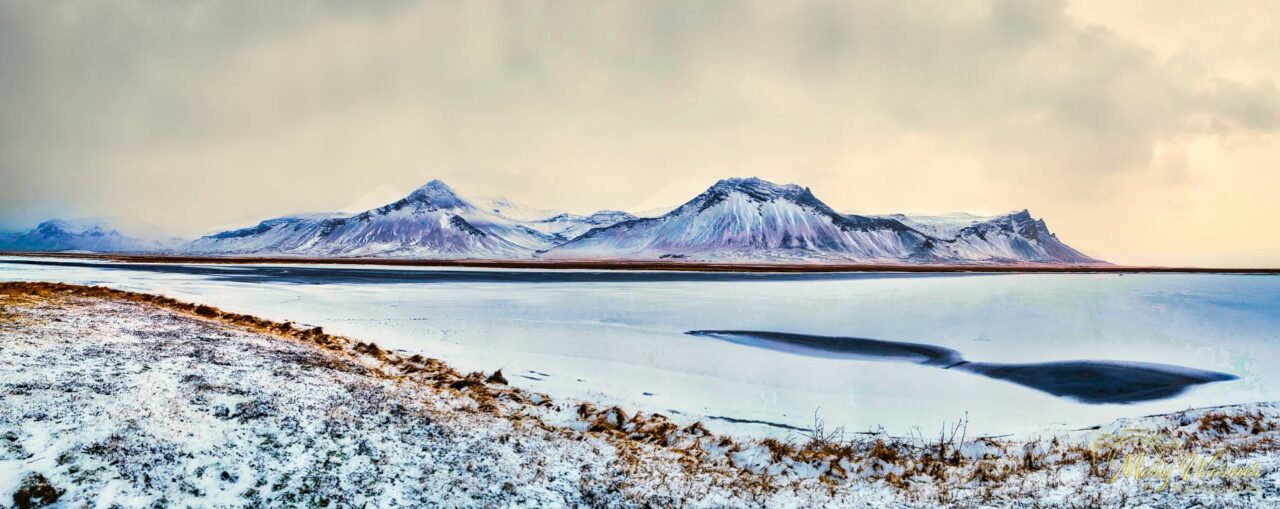
Gatklettur Arch Rock is a natural rock formation that has been carved by the waves into a circular arch. You can admire the stunning patterns and textures on the rock. We also visited Londragnar rocks, which are basalt volcanic plugs, the remnants of a once massive crater. Hurricane force winds on the day of our visit blew the waves at Skardsvík Beach sky high.
No tour of the Snæfellsnes Peninsula would be complete without a stop at Kirkjufell, which rises 1519 feet from the sea and towers above the Kirkjufellsfoss waterfall. Its name means “Church Mountain” in Icelandic, because of its shape that resembles a church steeple. It is probably the Number 1 photographed location in Iceland. This mountain stands above the small fishing town of Grundarfordur and has been voted as being one of the top 10 most beautiful mountains in the world. It is also commonly recognized as “Arrow Head Mountain” from Game of Thrones! The mountain is made of volcanic rock, but it is not a volcano itself.
One of the highlights of my trip to Iceland was seeing the beautiful and friendly Icelandic horses. These horses are a unique breed that originated in Iceland and they have been living there for over a thousand years. These horses are very curious and gentle, and they love to interact with people. They are used for sheepherding, leisure riding, showing, and racing in Iceland, and they are popular internationally as well. I found it interesting that many of the horses have blue eyes. Even in the harshest weather, they approached us at the fences and seemed happy to pose for our photography.
Visit my Iceland Photo Galleries for additional photos of Iceland. Or watch my video on YouTube about the trip by clicking the arrow button below.







